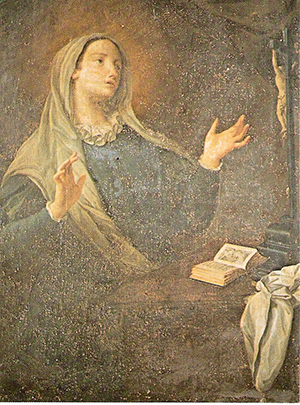Saint Catherine of Genoa
Feast day September 15

The year 1473 significantly changed the life of St. Catherine of Genoa. For the previous decade she had battled a severe depression apparently caused by her marriage that a brother had arranged for family reasons. Julian Adorno, her husband, proved himself a weak character, a spendthrift, and an unfaithful spouse. Then, for several decades after the pivotal 1473, she balanced intense contemplation and mortification with selfless humanitarian service to the sick and poor. Catherine’s turning point was a personal invasion of God’s love that exploded into her life around March 23, 1473, the feast of St. Benedict, whose intercession she had asked.

The experience seems to have temporarily immobilized Catherine, leaving her muttering, “No more sins! No more sins!” The impact of that first exhilarating awareness of God’s mercy remained ever with her, mixed with her own relentless sense of evil. She described her constant interior tension in her Spiritual Dialogue:
Considering man’s sins, the Soul was astonished at the goodness of God, which together with its own defects it saw in a vision. And the Soul said:
“O Lord, never more do I want to offend you, or do anything against your goodness, which has so bound me to you.” Then turning toward her humanity and seeing all its defects and bad instincts, the Soul said:
“Do you think you are clean enough to appear in the presence of God? Do you not see that you are not beautiful but all spattered with mud?” The suffering of the Soul was so great that it obliterated all other thoughts. The Soul said:
“Lord, I make you a present of myself I do not know what to do with myself. Let me, then, Lord, make this exchange: I will place this evil being into your hands.ou are the only one who can hide it in your goodness and can so rule over me that nothing will be seen of my own proper self. On your part, you will grant your pure love, which will extinguish all other loves in me and will annihilate me and busy me so much with you that I will have no time or place for anything or anyone else.
The year 1473 also brought Catherine’s husband first to bankruptcy, and then to conversion to an active faith. From that time the couple agreed to remain celibate. They relocated to a small house close to the hospital of Pammantone, where they tended the sick. Finally, they moved into the hospital in 1479, and Catherine became its administrator eleven years later.
The saint competently managed the hospital, one of Europe’s largest at the time. She served heroically during an episode of the plague in 1493, almost dying of the disease herself. After Julian died in 1497, Catherine looked out for his illegitimate daughter, providing for her in her will. And notably, she forgave her husband’s mistress. Catherine died of an undiagnosed illness in 1510.
 | from Voices of the Saints, by Bert Ghezzi |
Image credit: Saint Catherine of Genoa by Giovanni Agostino Ratti, 18th century. Public Domain via Wikimedia.

